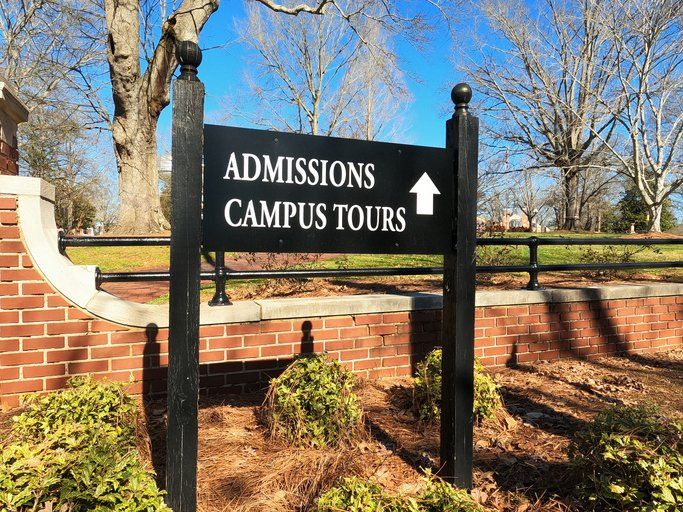This page is licensed under Creative Commons under Attribution 4.0 International. Anyone can share content from this page, with attribution and link to College MatchPoint requested.
How Do Admissions Officers Evaluate Activities?
High school is about more than grades and test scores. Activities give students the chance to discover new interests, refine skills, and grow into themselves. They also play a major role in how admissions officers evaluate applicants. When colleges review applications, they read activities alongside transcripts, test scores, essays, and recommendations. The goal is not to see who did the most, but to understand who a student is and what they might bring to a campus community.
Every student will have a different path, and every activity list will look unique. The key is not to try to “game” the system, but to build a record that reflects genuine interests and growth. Let’s take a closer look at how activities are read in admissions and what families should keep in mind as students shape their high school years.

Why Activities Matter
Most colleges now use holistic admissions. That means they evaluate students beyond GPA and test scores. According to a 2024 survey by the National Association for College Admission Counseling (NACAC), 57 percent of colleges said that extracurricular involvement is at least moderately important in admissions decisions, and 30 percent rated it as “considerably important.” For the most selective colleges, activities are often essential.
Activities also give admissions officers something numbers cannot. A transcript can show academic ability, but it cannot explain how a student leads, creates, or perseveres. The activities section reveals character, initiative, and values. That is why students should take time to shape this part of their application with intention.
Explore Interests
The early years of high school are the best time to explore. Students should try different activities and pay attention to what sparks curiosity. A freshman who signs up for debate, robotics, and cross country might discover that one sticks while the others fade. That is part of the process.
Exploration also signals growth. Colleges want to see that a student has been willing to try new things and learn about themselves along the way. In fact, the Common App activity section allows students to list up to ten activities, but admissions officers rarely expect students to use all ten. What matters is that the activities included show genuine interest and development over time.
Example: A student might begin high school volunteering casually at a food pantry. By junior year, they may have organized donation drives, applied for grants, or launched a social media campaign to raise awareness. That progression shows exploration that led to deeper involvement and impact.
Go Deep
Depth is often more valuable than breadth. Colleges prefer to see sustained commitment and leadership in a few areas rather than surface-level involvement in many. A recent analysis of Harvard admissions data revealed that applicants with “angular” profiles—those who demonstrated deep achievement in one or two areas—were more likely to stand out than students who spread themselves thin across many activities.
Example: A student who has played the clarinet since childhood can deepen that passion in multiple ways. They might join a citywide youth orchestra, mentor younger musicians, or launch a project to collect second-hand instruments for schools with limited resources. Each of these steps adds depth and impact while staying rooted in a long-term interest.
Take Risks
Admissions officers notice when a student takes on challenges outside of their comfort zone. Risk-taking signals resilience, creativity, and character. It also reflects a willingness to grow.
Risks do not have to be dramatic. They can be as simple as trying out for a school play despite never acting before or running for student council even if the election might be lost. What matters is that the student shows courage and learns something in the process.
Students should also remember that activities are not limited to what a school offers. Hobbies, part-time jobs, or personal projects count too. A student who builds a website to showcase local history or starts a small landscaping business is demonstrating initiative, even if those activities do not appear in the yearbook.
Pivot if Necessary
High school is a time of change. Interests may evolve, and that is not only normal but expected. Colleges understand that students may pivot from one area to another. What matters is how the pivot is explained and what it shows about growth.
Example: A student may begin high school convinced that robotics is their future. After a year or two, they realize that the excitement they feel in English class is stronger. They start writing poetry, submit work to local contests, and even organize an open mic night. That pivot tells a story of discovery, adaptability, and courage to follow a new path.
Sometimes a pivot can even become a powerful essay topic. It gives students the chance to explain how they redefined themselves, what they learned, and how they plan to build on it in college.
Think Locally and Expand
Families often feel pressure to invest in expensive summer programs or international service trips. While those opportunities can be valuable, they are not required to impress admissions officers. In fact, research from Challenge Success at Stanford shows that students who engage meaningfully in their own communities often demonstrate more authentic impact than those who attend packaged programs.
Local engagement is powerful. A student who tutors younger children in their neighborhood, helps a local nonprofit improve its website, or works at a local restaurant is building skills and showing responsibility. Those experiences can be just as meaningful as a summer abroad program. In some cases, they may be even more impressive because they reflect initiative and commitment rather than a purchased experience.
That said, students can also expand their impact beyond the local level. An initiative that begins in the community may grow to reach wider audiences. A student who starts a recycling project at their school might later present at a regional environmental conference. Growth can be organic, beginning small and expanding with time.
Value Character and Community
At the end of the day, admissions officers are looking for students who will strengthen the campus community. Activities are one of the ways they assess this. They ask: Who is this student? What do they value? How will they contribute to our community?
Selective colleges often talk about “fit to campus” as much as “fit to major.” They want to build diverse, dynamic classes of students who will support each other, challenge each other, and make the campus stronger. An activity list is not just about achievement. It is about character.
Example: Consider a student who consistently steps up to support peers—whether by founding a peer tutoring club, leading team huddles in soccer, or simply showing kindness in everyday settings. That student signals community-mindedness, which admissions officers value deeply.
Putting It All Together
Parents often ask: what is the perfect activity list? The truth is, there is no single formula. Colleges are not searching for cookie-cutter involvement. They want to see students who have explored, gone deep, taken risks, pivoted when necessary, engaged locally, and shown character.
The activity list, combined with essays and recommendations, provides a full picture of a student’s growth and potential. Done well, it helps admissions officers see the person behind the transcript.
Takeaways for Families
- Encourage exploration early. Freshman and sophomore years are the time to try new things.
- Prioritize depth over breadth. Sustained commitment and leadership matter more than filling all ten Common App slots.
- Celebrate risk-taking. Courage and resilience show character.
- Support pivots. Changing direction can be a strength, not a weakness.
- Think local first. Community-based engagement often makes the biggest impact.
- Highlight character. Admissions officers want students who will contribute to campus life.


